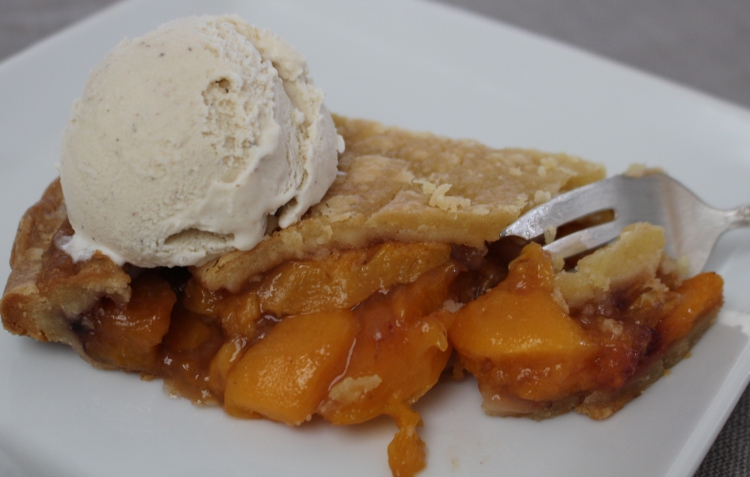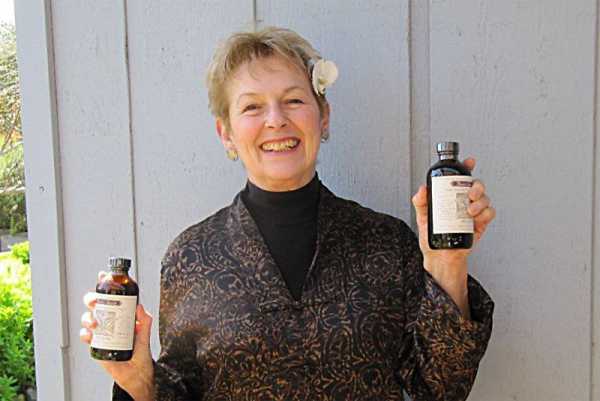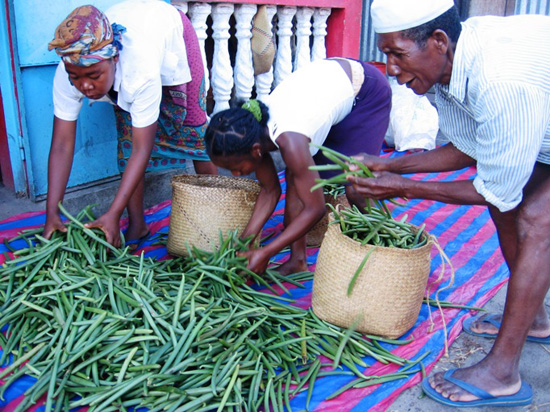
I'm amazed at how superior your vanilla is!
– Des, The Grommet
Nutmeg and Mace come from an evergreen tree, Myristica fragrans, which is indigenous to the Molucca Islands of Indonesia and is now also cultivated on other Indonesian islands, on West Indian islands in the Caribbean, in Malaysia and India. There are related varieties grown in Papua New Guinea and India that are not as high quality.
The nutmeg tree produces a mottled yellow fleshy fruit or pericarp that is made into jam in both Indonesia and Grenada, and is also made into a crystalized candy in Indonesia. The spice “mace,” is the lacy covering or arillus of the nutmeg. The nutmeg seed itself is encased in a shell (like a nut) that must be cracked to reveal the seed. Nutmeg is the only tropical fruit that provides two spices. It is best grated fresh, as it quickly loses its flavor when ground.
It takes seven to nine years after planting for the first harvest from nutmeg, and 20 years for the tree to be in full production. At this point the tree can produce up to 2000 nutmegs a year. The fruits are harvested with a basket on a pole, then the fruits are separated from the mace and nutmeg seeds. The mace is pressed between boards to flatten it and the nutmeg seeds are dried until they rattle, then the outer shell is removed.
Nutmeg has been a desired spice since antiquity. During the Middle ages, it was believed to ward off the plague, so it was in high demand and supplied by Arab traders. When the Portuguese became seafaring explorers, they attempted to run the nutmeg trade, and restricted growth to the Banda and Ambiona Islands. By the 17th century the Dutch had established the Dutch East India Company and controlled the industry, fighting with Britian to keep control of the best sources. Ultimately, they traded New Amsterdam (New York) for control of Run Island. Later, the British again took control of the Banda Islands from the Dutch and transplanted nutmeg trees to their holdings in Zanzibar and Grenada. Nutmeg was so valuable at one point, that allegedly, in England several hundred years ago, selling a few nutmeg seeds could provide financial independence for life.
Nutmeg and mace taste similarly; nutmeg is a bit sweeter and mace is more delicate. Mace is used in light dishes for the bright orange, saffron-like color it imparts. In Europe and the United States, nutmeg is used in cream and cheese sauces, soups, potato dishes, on vegetables, and in baked goods and cream desserts. Nutmeg is also a traditional ingredient in mulled cider, eggnog and other holiday beverages.
Nutmeg is used in many countries, worldwide, in sweet and savory cuisine. It is used to flavor pickles, is ground and smoked, is an ingredient in garam masala, and is sprinkled into alcoholic beverages.
Nutmeg contains myristicin, which causes no problems when used as a flavor. However, myristicin is known to create hallucinations, vomiting, dehydration and potentially death when ingested in large quantities. Nutmeg has some medicinal properties and its oleoresins are used in both the cosmetic and pharmaceutical industries.
I was given a small bottle of Rain’s Choice in a gift basket and I have been hooked ever since. The flavor makes all of my baking so much better! I will never use grocery store vanilla again!


© 2021. All Rights Reserved
Designed/Developed by Kat & Mouse